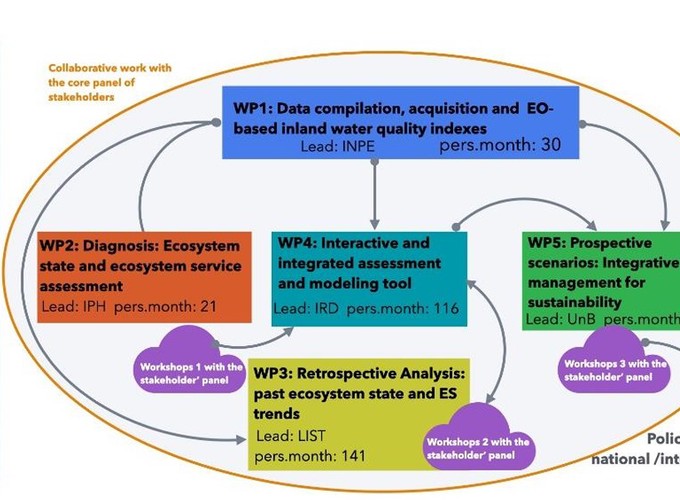WaterWeaver – Weaving Knowledge for Healthy and Resilient Aquatic Socio-Ecosystems – Towards a Methodological and Modeling Framework (WaterWeave) (FAPESP)
Due to their complex and interconnected nature, as well as the multiple demands imposed by human activities, trade-offs can arise in the provision of ecosystem services by aquatic ecosystems, and sometimes these services may not meet their demand. These tensions are exacerbated by climate change, the increasing occurrence of extreme events, the growing demand for water, and land use changes. Finding innovative ways to manage water resources while preserving freshwater ecosystems and ensuring equitable access to their services is a major challenge that must be addressed by considering the interconnection between societies and ecosystems. To advance research on this urgent issue, WaterWeave brings together an interdisciplinary and international consortium to develop an Integrative and Interactive Tool (IIT) that promotes social learning and aids in water resource and freshwater ecosystem management in the context of land use and climate change. The IIT will integrate deterministic, probabilistic, or data-driven models to represent ecosystem functioning and ecosystem service provision, alongside multi-agent interactive models to represent the social components of the system. Simplicity will be maintained to ensure ease of use, direct interpretation, and adaptability to local contexts. The development of the IIT will be guided by interactions with a panel of key stakeholders—including managers, decision-makers, and various end-user groups such as representatives of traditional local communities—recruited from three test sites in Brazil (São Paulo, Rio Grande do Sul, and Pará) and one in Luxembourg. At each site, starting from a diagnosis of freshwater ecosystems, including their associated services and demands using existing scientific and local knowledge, datasets, and models, we will discuss water and ecosystem-related issues, identify key direct and indirect drivers (including governance systems), and define the scope of the IIT within the project’s timeframe. Next, we will conduct a retrospective analysis using existing datasets and models, complemented by sediment core sampling to assess e-DNA and anthropogenic contaminants. This will be carried out through the lens of public policies and management decisions, highlighting successful and unsuccessful measures and defining realistic management scenarios to guide further IIT development. Finally, we will explore future greenhouse gas emission scenarios. The IIT will enable the stakeholder panel to test their management proposals for different time horizons and explore alternative scenarios by modifying decisions or social behaviors, collectively identifying more sustainable solutions for the territory.
